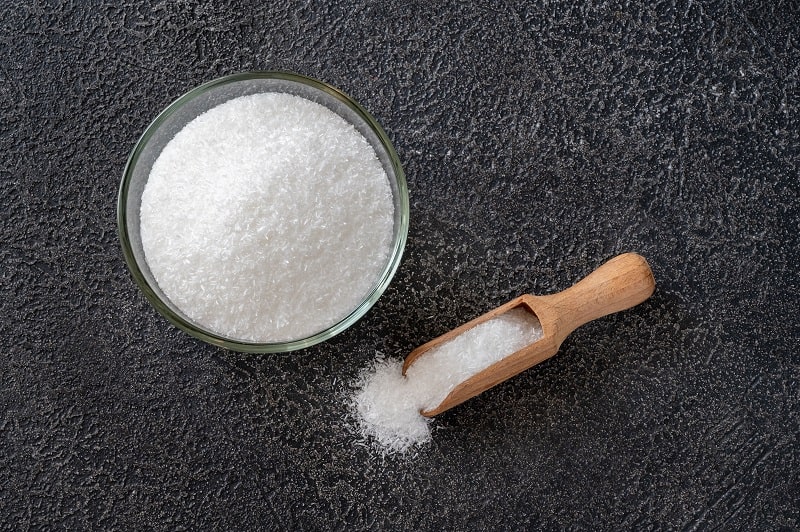Monosodium Glutamate, often abbreviated as MSG, is a flavor-enhancing food additive widely used in the culinary world. It is known for its ability to impart a savory or umami taste to various dishes.
Historical Context
The history of MSG dates back to 1908 when Japanese scientist Kikunae Ikeda isolated it from seaweed broth. Its commercial production began in the early 20th century, and MSG gained popularity for its flavor-enhancing properties.
Production and Sourcing
MSG is produced through the fermentation of starches or sugars, typically from sources like corn, tapioca, or molasses. It is found in various forms, including crystals, powder, or liquid, and is sourced from reputable manufacturers.
Applications
MSG is a common ingredient in savory dishes, snacks, soups, and processed foods. It enhances the natural flavors of ingredients and is prevalent in Asian and international cuisines, contributing to the umami taste.
Regulatory Framework
MSG is generally recognized as safe (GRAS) by regulatory agencies, including the U.S. Food and Drug Administration (FDA) and the European Food Safety Authority (EFSA). It is subject to labeling requirements in many countries for transparency in food products.
Consumer Concerns
Consumer concerns related to MSG primarily revolve around its potential health effects, such as the “Chinese restaurant syndrome.” However, scientific studies have largely debunked these concerns, and MSG is considered safe for the vast majority of people. It’s essential to note that some individuals may have sensitivities or allergies to MSG, and they should avoid it.
Health and Safety
MSG is considered safe for most people when consumed within recommended limits. It has been extensively studied, and scientific evidence supports its safety. Some individuals may report mild symptoms like headaches or sweating after consuming large quantities of MSG, but these reactions are rare and not considered a significant health concern. If you suspect you are sensitive to MSG, it’s advisable to limit your intake and consult a healthcare professional if needed.
Applicable Products
Food Products: MSG is commonly used in various food products, including soups, snacks, canned vegetables, and restaurant dishes. It adds a savory flavor to these items.
Seasonings: Many seasonings and flavor enhancers contain MSG as a key ingredient. It intensifies the taste of dishes and is a staple in kitchens worldwide.
Restaurant Cuisine: MSG is prevalent in restaurant cuisine, especially in Asian cooking. Dishes like stir-fries, noodles, and broths often include MSG for flavor enhancement.
Processed Foods: Numerous processed and convenience foods contain MSG to improve taste and aroma. These can range from frozen meals to packaged snacks.
Alternatives
For individuals who prefer to avoid MSG or have sensitivities to it, there are alternative seasonings and flavor enhancers available. These alternatives use herbs, spices, and natural flavorings to achieve a savory taste without MSG. Some people opt for these alternatives to customize their food to their preferences or dietary restrictions.
Scientific Research
Scientific research on MSG has demonstrated its safety for the general population. Multiple studies have investigated claims of adverse effects, including the “Chinese restaurant syndrome,” and found no consistent evidence supporting these claims. MSG has undergone extensive testing, and regulatory authorities worldwide have approved it as a safe food additive. Ongoing research continues to explore its culinary applications and potential health benefits.
Chemical Properties
MSG, chemically known as sodium glutamate, is the sodium salt of glutamic acid, an amino acid found naturally in many foods. Its chemical formula is C5H8NNaO4, and it has a white crystalline appearance. MSG is highly soluble in water, which makes it easy to incorporate into various food preparations.
Case Studies
Case studies related to MSG often focus on its safety, its use in the food industry, and its effects on taste perception. Researchers have conducted numerous experiments to evaluate its impact on human health and sensory experiences. These studies contribute to our understanding of MSG and its role in the culinary world.
Synonyms
Synonyms for Monosodium Glutamate include MSG, sodium glutamate, E621 (its European food additive code), and simply “glutamate.”
Conclusion
Monosodium Glutamate (MSG) is a food additive that has been used for over a century to enhance the flavor of various dishes. It is safe for the vast majority of people and is a key component of umami, one of the five basic tastes. Scientific research has consistently supported the safety of MSG, debunking claims of adverse effects such as the “Chinese restaurant syndrome.” While some individuals may have sensitivities to MSG, it is not a significant health concern for the general population. MSG continues to be a valuable tool in the culinary world, contributing to the deliciousness of countless recipes.
Find out more about MSG from Health Canada: Health Canada’s Information on MGS







